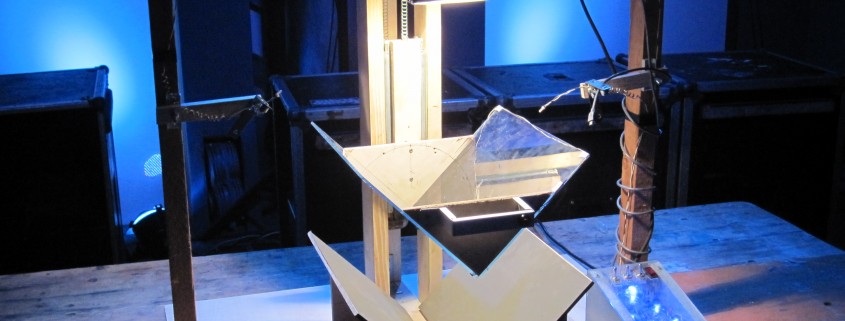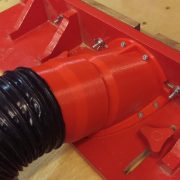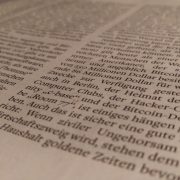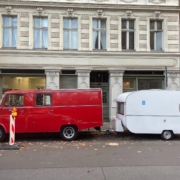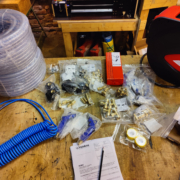Bookscanner
Project Description and Requirements
When I began studying, it was projected that the necessary books would total approx. 1,400€. The price for the whole scanning project therefore could not exceed this cost. Furthermore, the utility of the device depended on its capacity to be rapidly operated, with a goal of nearly 800 pages scanned per hour.
Operation
The user puts a book in the machine and opens it. The cameras to the left and right are set up in such a way, that they are orthogonal to the plates of glass, when these plates are in the lower position.
The aforementioned glass plates are moved down until they flatten the book pages (lower position), after which the user triggers both cameras through a button in the handle. Then the glas-V may be elevated, until the page can be turned underneath (upper position) and the whole procedure may then be repeated as needed.
Mechanical Functioning
The V-shaped book cradle allows for books of various thickness via a width-adjustable support design, which can accommodate a book spine of any realistic width between the two supports. Additionally, the cradle is covered with a dark-grey rubber to be slip-resistant and prevent unintended movement of the book during the scanning process. The whole book cradle is mounted on linear rails and can be moved horizontally from left to right; two glass panes form a wedge, which is mounted on linear rails and can be moved vertically. The weight of the wedge is counterbalanced with a weight, resourcefully fashioned from a Club-Mate bottle filled with nails. The wedge and the counterweight are connected via a metal chain, that runs over custom-turned aluminium pulleys mounted on ball bearings.
Electronical Functioning
The cameras run the alternative firmware for Canon cameras called CHDK, the Canon Hack Development Kit. This firmware adds features to these cameras, which are usually only found in professional, prohibitively expensive devices. Especially relevant was the firmware’s support of PTP, a protocol which allows a computer to control every function of a digital camera. The software spreads trigger the cameras and download the pictures. Afterwards, the pictures are run through a chain of different tools, for example ScanTailor, djvubind, tesseract or cuneiform; this process is managed by spreads. In the end, an ebook is created.
Costs
The biggest cost factor of this project was the digital cameras, at about 200€ each. The linear rails, pulleys, bearings, and other mechanical parts altogether cost about 150€, and the used wood totalled ca. 50€. Approximately 100€ was then required for various sundry parts, cables, power supply units, adapter and plugs. The total costs of this project came to 700€ and were covered by myself.
Project Results
With the utility of my newly-built book scanner, I was successfully able to scan all necessary and optional books for my studies. Further, having all these books always with me in digital form had unforeseen practical benefits, making me a very popular student at my university. The speed of scanning for the unpractised user averages 800 pages per hour, but with only several thousand pages experience, a user may scan approx. 1000 pages per hour.
The device is fully operational and is currently housed in c-base e.V. in Berlin. It is available to all members of c-base for free.


